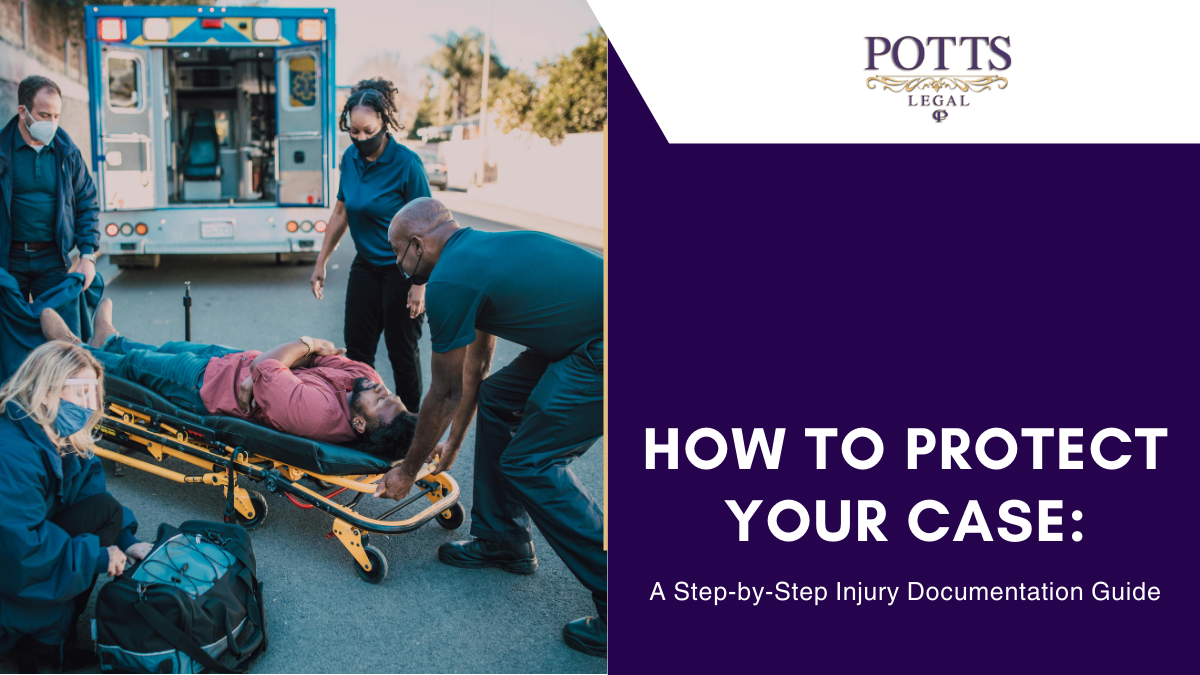- Call Us: (772) 207-0546

When you’ve been injured in a collision, thorough and well-organized documentation is essential to protecting your rights and strengthening your personal injury claim. Proper documentation not only helps tell the full story of your injuries but can significantly affect your settlement or verdict.
Organize Your Evidence — Physical and Digital
Keeping your case materials organized ensures nothing gets overlooked. Set up labeled folders—either physical, digital, or both—for the following categories:
- Injuries & Medical Care
- Incident Reports
- Property Damage
- Lost Wages
- Correspondence (e.g., insurance letters, emails)
Physical copies might include printed documents, bills, or official reports. Digital versions can be stored on a flash drive, cloud storage, or secure folders on your device. Make sure backups exist in case anything is lost.
⸻
Step 1: Seek Medical Attention Immediately
Your first priority should always be your health. Prompt medical care creates a critical record linking your injuries to the accident. Delaying treatment may weaken your case, as insurers might argue that your injuries weren’t serious or weren’t caused by the incident.
Ask for copies of all diagnostic reports, treatment notes, discharge instructions, and prescriptions. These become key components of your claim.
⸻
Step 2: Gather On-the-Scene Evidence (If Safe to Do So)
If you’re physically able and it’s safe:
- Take clear photos of your injuries at the scene and in the days that follow. Capture different angles and stages of healing.
- Document the accident scene (vehicles, hazards, road conditions).
⸻
Step 3: Track Medical and Injury Details
Your injury-related documentation should include:
- Pain levels and how they change over time
- Appointments, treatments, therapy sessions, and surgeries (with receipts)
- Travel mileage and time to and from medical visits
- Symptoms (e.g., limited mobility, headaches, numbness)
- Medical imaging (e.g., MRI, CT scans, X-rays)
- Prescription medications and dosages
- Notes on how the injury affects your daily life (work, sleep, physical activity)
Consider keeping a journal to track your condition, physical limitations, and emotional state.
⸻
Step 4: Don’t Overlook Emotional and Psychological Effects
Injury cases often involve more than just physical harm. If you’re experiencing emotional distress, it’s important to track those symptoms too:
Feelings of anxiety, depression, or mood swings
Sleep disturbances, flashbacks, or avoidance behaviors
Fear of returning to certain activities (e.g., driving)
Any psychological therapy or counseling sessions you’ve attended
Document how you’re feeling, and don’t hesitate to seek professional support. Emotional damages are recognized in many claims.
⸻
Step 5: Collect Incident and Police Reports
Official reports provide important details of the incident:
- Police accident reports
- Paramedic reports
- Fire department reports
- Witness statements
- Media coverage (if applicable)
- Employer incident reports (if the incident happened at work)
Request copies as soon as they become available.
⸻
Step 6: Gather Proof of Property Damage
If your property—especially a vehicle—was damaged:
- Obtain the police report with details on damage
- Save estimates, repair invoices, and before/after photos
- Document any out-of-pocket expenses for rental vehicles or towing
⸻
Step 7: Document Lost Wages and Employment Impact
If your injuries forced you to miss work, gather:
- Doctor’s notes recommending time off
- Employer verification of missed workdays and lost income
- Pay stubs or direct deposit records from before and after the injury
Also note any long-term career impact, such as reduced hours or inability to return to your previous role.
⸻
Thorough documentation helps when seeking compensation—not just for medical bills, but for the full impact of your injuries on your life. If you’re unsure about what to collect or how to organize it, working with a personal injury attorney can provide the guidance you need.
Helpful Links
FIND US ON:

Links
Menu
Contact
- (772) 207-0546
- 1860 S.W. Fountainview Blvd., Suite 100, Port St. Lucie, Florida 34986
- info@potts-legal.com
Copyright © 2016-2025 Potts Legal, PLLC. All Rights Reserved.
